To Charles Lyell 14 January [1860]
Down Bromley Kent
Jan. 14th
My dear Lyell
Your gossip about Reviewer has interested & amused me much.— I have reread Gardeners Ch. with extreme pleasure now that I know Hooker is author.—1
Jeffreys’ letter is really not worth sending:2 he says nothing about migration but only refers me to his paper on Testacea of Piedmont in Annals & Mag. of Nat. History for Feb. 1856.3 He refers, to another paper on British shells, but gives no sort of reference, & I have looked over all his papers, which I have, & can find nothing. Perhaps I spoke too strongly about his non-migration views;; I remember thinking him far too narrow & decided in his opposition to Forbes. for casting my eye now over his paper I find my memory seems to have exaggerated his non-migration doctrine.4 I hardly understand what he objects to, in my Book; unless it be that I follow Forbes on Glacial migration—5 I am convinced from littoral shells of Galapagos Arch. that such shells must have some great power of migration; for if you require continuous coasts for the migration of littoral shells, you would have to unite these islands, within the period of living shells both to America & the far distant Pacific islands, which, I presume would stagger even the warmest followers of Forbes.6 By the way it strikes me that one of grandest points in Hooker’s Essay is the (in my eyes, but I presume by no means in his eyes) demonstration that N. Zealand has not been continuously, or even nearly continuously, united with Australia within recent times.7
I shall be much interested in reading your man discussion, & will give my opinion carefully whatever that may be worth; but I have so long looked at you as the type of cautious scientific judgment (to my mind one of the highest & most useful qualities) that I suspect my opinion will be superfluous.— It makes me laugh to think what a joke it will be, if I have to caution you, after your cautions on same subject to me!.—
I will order Owen’s Book:8 I am very glad to hear Huxley’s opinion on his classification of man; without having due knowledge it seemed to me from very first absurd.9 All classifications founded on single character, I believe have failed.
I agree with Huxley that it is a difficulty about no ascertained varieties known to have been raised by man, being sterile together: varieties of same kind, I believe, not rarely prefer pairing together; I have fact on this head. But I think Huxley had not considered my discussion. (p. 268 new Edit.) The sterility of the vars of Verbascum is a most wonderful case, & that of Tobaccos. But the subject of sterility is so profoundly mysterious, as I could show, & as anyone will see who will read even my short chapter, that it would be truly wonderful if no difficulties were presented; & as you say the subject would be no subject for discussion.10
With respect to Geoffroy St. Hilaire, I have been glancing over his Life by Isidore & his Principes;11 & it seems to me that he was a rather doubtful maintainer of change of species.— Isidore writes to me that he himself is a firm maintainer of such views: he says he has sent me a publication of his to show this, but it has not arrived.12
With respect to cave insects the same seeing genera do range over, as you well know, Europe & N. America, & the difficulty applies chiefly in this case of America & Europe. Do you know of any miocene or pliocene fossil insect in N. America; your hint would be very valuable, if I could show that some extinct genera were common to both countries?—
Goodnight— | Yours affect | C. Darwin
What a grand, immense benefit you conferred on me by getting Murray to publish my Book.—13 I never till to day realised that it was getting widely distributed; for in a letter from a lady today to Emma, she says she heard a man enquiring for it at Railway Station!!! at Waterloo Bridge; & the Bookseller said that he had none till new Edit. was out.— The Bookseller said he had not read it but had heard it was a very remarkable book!!!
Can you give me any suggestion how to get a German Translator. As for France I suppose there will be no chance: Madame Belloc finds it too difficult.—14 (Since this written by odd chance I have had letter from Frenchman who wishes much, to translate.)15
Footnotes
Bibliography
Correspondence: The correspondence of Charles Darwin. Edited by Frederick Burkhardt et al. 29 vols to date. Cambridge: Cambridge University Press. 1985–.
Forbes, Edward. 1846. On the connexion between the distribution of the existing fauna and flora of the British Isles, and the geological changes which have affected their area, especially during the epoch of the Northern Drift. Memoirs of the Geological Survey of Great Britain, and of the Museum of Economic Geology in London 1: 336–432.
Geoffroy Saint-Hilaire, Isidore. 1847. Vie, travaux et doctrine scientifique d’E. Geoffroy Saint-Hilaire. Paris.
Geoffroy Saint-Hilaire, Isidore. 1851. Cours de zoologie (mammifères et oiseaux), fait au Muséum d’histoire naturelle, en 1850. Revue et magasin de zoologie 2d ser. 3: 12–20.
Jeffreys, John Gwyn. 1856. On the marine Testacea of the Piedmontese coast. Annals and Magazine of Natural History 2d ser. 17: 155–88.
Origin: On the origin of species by means of natural selection, or the preservation of favoured races in the struggle for life. By Charles Darwin. London: John Murray. 1859.
Variation: The variation of animals and plants under domestication. By Charles Darwin. 2 vols. London: John Murray. 1868.
Summary
Review of Origin in Gardeners’ Chronicle [31 Dec 1859].
Criticises views of J. G. Jeffreys on non-migration of shells. Cites case of Galapagos shells.
Mentions Edward Forbes’s theory of submerged continental extensions. Cites Hooker’s [introductory] essay [in Flora Tasmaniae (1860)] for evidence against any recent connection between Australia and New Zealand.
Discusses Huxley’s views of hybrid sterility.
Questions whether Étienne Geoffroy Saint-Hilaire believed in species change. Mentions views of Isidore Geoffroy Saint-Hilaire.
The distribution of cave insects.
CD’s study of man.
The problems of locating French and German translators.
Huxley’s criticism of Owen’s views on human classification.
The sale of Origin.
Letter details
- Letter no.
- DCP-LETT-2650
- From
- Charles Robert Darwin
- To
- Charles Lyell, 1st baronet
- Sent from
- Down
- Postmark
- JA 15 60
- Source of text
- American Philosophical Society (Mss.B.D25.192)
- Physical description
- ALS 6pp
Please cite as
Darwin Correspondence Project, “Letter no. 2650,” accessed on 19 April 2024, https://www.darwinproject.ac.uk/letter/?docId=letters/DCP-LETT-2650.xml
Also published in The Correspondence of Charles Darwin, vol. 8


